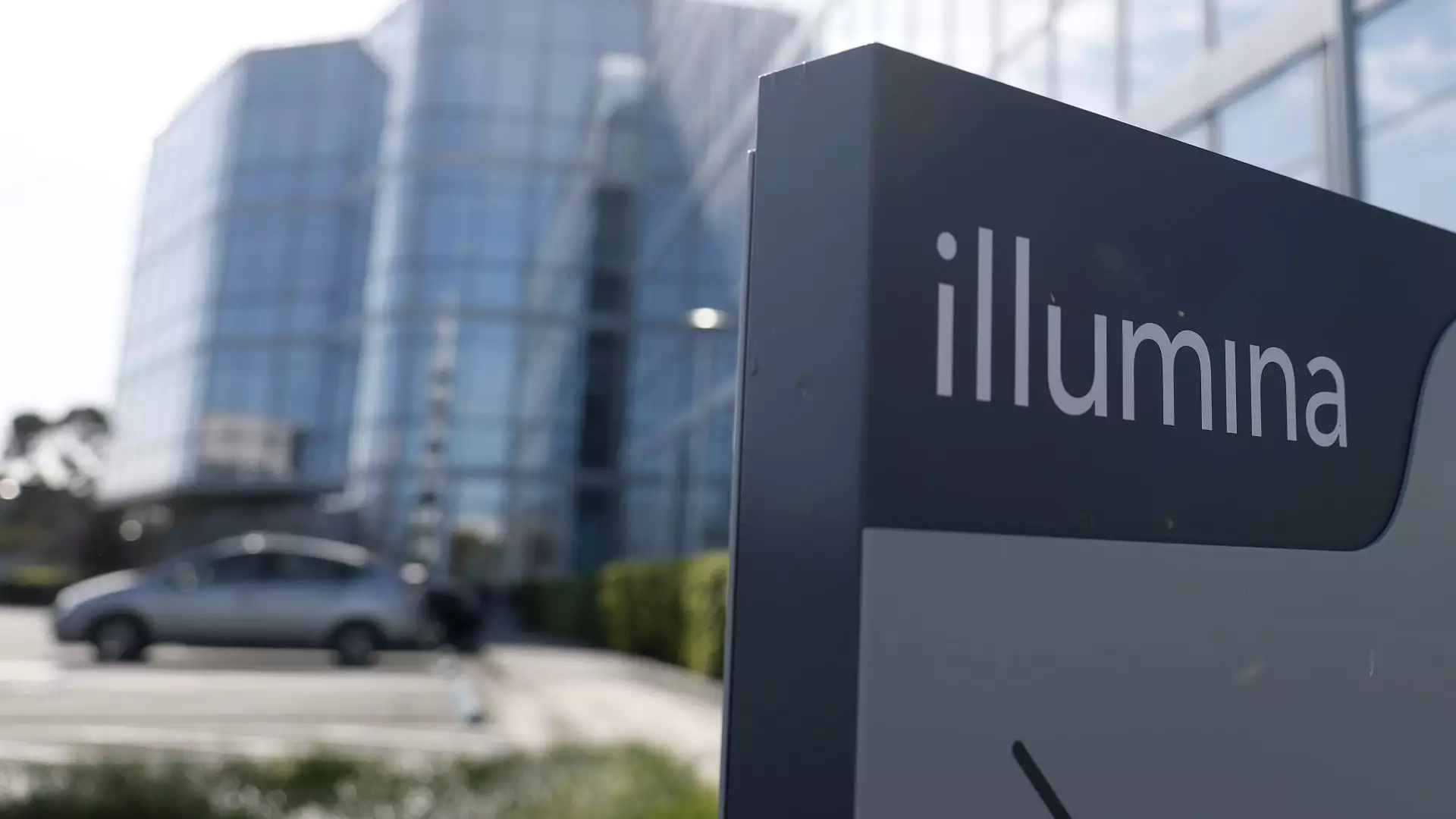Illumina once stood tall as the vanguard of genomic technology, boasting a market cap of around $70 billion before the pandemic induced a whirlwind of demand for its sequencing solutions. The company thrived on its cutting-edge biotechnology, appealing to both research and clinical markets. Now, however, with a valuation that plummeted to under $13 billion, it’s time to dissect the factors leading to this disheartening decline. Illumina might have pioneered revolutionary methods in DNA sequencing, yet it now finds itself lost in a labyrinth of miscalculations and external hurdles.
Post-Pandemic Fallout: A Downward Spiral
Illumina’s revenue sharply surged during the height of COVID-19, with a staggering increase of approximately 40% between 2020 and 2021. However, the post-pandemic reality has been unkind. As the urgent need for widespread testing faded, Illumina has been unable to sustain its explosive growth rates. The bias towards a stellar 2021 performance now burns like a scorch mark on their financial history as figures indicate only marginal revenue declines from a high of $4.5 billion to $4.3 billion today.
The strategic errors during this turbulent period, including the ill-fated acquisition of Grail, have compounded Illumina’s downward trend. The costly resurrection of Grail—initially birthed by Illumina in 2015, spun off in 2016, and then scooped back up in a controversial $8 billion deal—has marred the company’s reputation and strained its financial viability. Consent from regulatory bodies such as the FTC was ignored, and the backlash faced from the European Commission led to heavy fines, further complicating matters.
The Grail Saga: Where Hope Turned to Dismay
Illumina’s hard lessons learned from the Grail saga echo the pitfalls of rapid expansion without adequate foresight. The eventual re-spin of Grail in June 2024, while temporarily appeasing critics, demonstrated that short-sighted ambition can lead even the most promising companies astray. A company built on technological excellence now appears shackled by overreach, visions that exceeded practical boundaries, and a series of miscalculations that reveal a deeper systemic issue.
Adding insult to injury, geopolitical turmoil has battered Illumina’s growth, with recent complications in Russia and China further smashing any hopes for swift recovery. The uncertain funding from the National Institutes of Health has merely compounded these challenges, leaving many in the biotech industry second-guessing their trajectories.
Transitioning to the Next Generation: A Double-Edged Sword
Illumina finds itself at a pivotal crossroads: transitioning to a new generation of sequencing technology known as NovaSeq X. While this is undoubtedly a natural evolution, it bears a risk of social unrest amongst shareholders anticipating immediate returns. Investors are wary of the short-term pressures this transition could impose on revenues, which only adds to the baggage they are carrying from past errors.
The razor-and-blade business model that had once characterized Illumina’s game plan—a model where the machines yield around 30% margins while consumable sales reap around 80%—is facing scrutiny. Although the groundwork appears solid, will this model maintain its appeal if the company falters in the execution of NovaSeq X? The billion-dollar question remains whether Illumina can adeptly pivot while appeasing the existing demands of its client base.
A New Hope: Leadership and Fresh Perspectives
In the quest to avert disaster, Illumina’s leadership dynamics have undergone significant changes, most notably with the recent inclusion of Keith Meister from Corvex Management on the board. Though some view this as a panacea for Illumina’s ailing fortunes, others remain skeptical. Meister’s reputation is that of an astute investor, known for catalyzing positive change, but his success in stabilizing a ship that’s now doubled down on a risky business transition is still uncertain.
This fresh infusion of talent could either serve as a beacon of hope or highlight additional schisms within the company’s existing infrastructure. The transformation ahead demands more than just a figurehead; it requires an infusion of bold ideas and agile strategies to improve legacy systems and tangibly enhance product offerings.
The Road Ahead: No Clear Sights of Reprieve
Navigating the murky waters of the current economic landscape, driven by a century of political uncertainty, poses severe challenges for Illumina. The brief upsides experienced during previous market fluctuations now feel like distant recollections against the stark backdrop of reality. The company must hope that its latest maneuvers—such as regrouping its leadership team and rallying innovative strategies—can pave the way for recovery.
Illumina’s situation serves as a cautionary tale for the biotech industry, illustrating how quickly fortunes can shift and how even the most innovative companies can stumble. The stakes are high, and as Illumina confronts its demons, the biotech giant must adapt or risk being burdened by a legacy of missed opportunities. Only time will tell if they can reclaim their position at the forefront of genomic technology or if they remain mired in a landscape of former glory.

